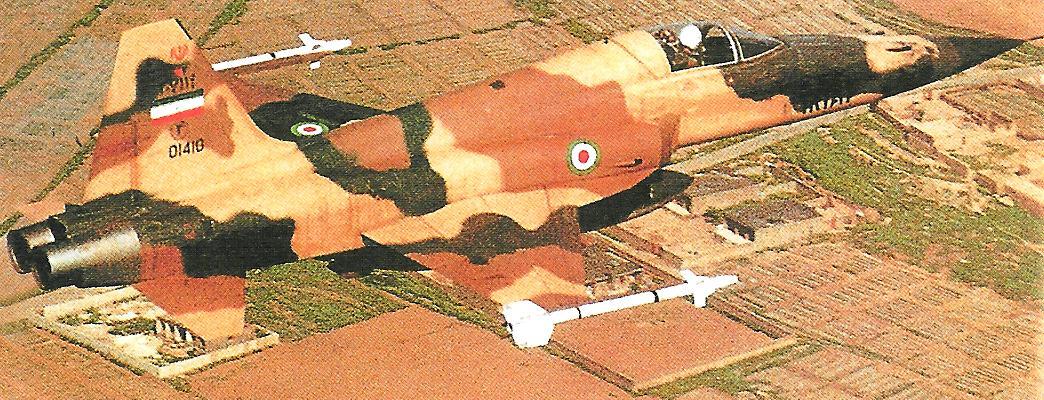Babak Taghvaee has written a comprehensively researched book (published in 2015) on the combat history of the F-5 (Tiger) combat aircraft in service of the Iranian Air Force since 1966. Printed below (with edits) is a book review originally published in Avworld.ca. Kindly note that: (a) the text printed further below has been slightly edited from the original report and (b) all images, videos and their accompanying captions printed below do not appear in the original Avworld.ca report.
Readers further interested in the topic of the Iranian air force during the Iran-Iraq War (1980-1988) and modern Iranian military history in general, are encouraged to consult the following resources:
- Iranian Military History and Armies 1900-Present
- A Short History of the F-4 Fighter-Bomber in the Iranian Air Force
- A Brief Overview of the F-14A Tomcat in Iranian Service
- The role of the Iranian Air Force in Halting the Iraqi invasion in 1980
- The case of the Iranian F-14A Tomcat that downed three aircraft with a single Phoenix missile
- Western, Pakistani and Egyptian pilots flying Iraqi Combat Aircraft during Iran-Iraq War
- Farrokh, K., & Sánchez-Gracia, J. (2022). La Guerra Iran-Iraq [The Iran-Iraq War]. Historia de la Guerra, 29, pp.63-77.
For a comprehensive textbook on the military history of Iran from the Safavid era to the end of the Iran-Iraq war, consult:
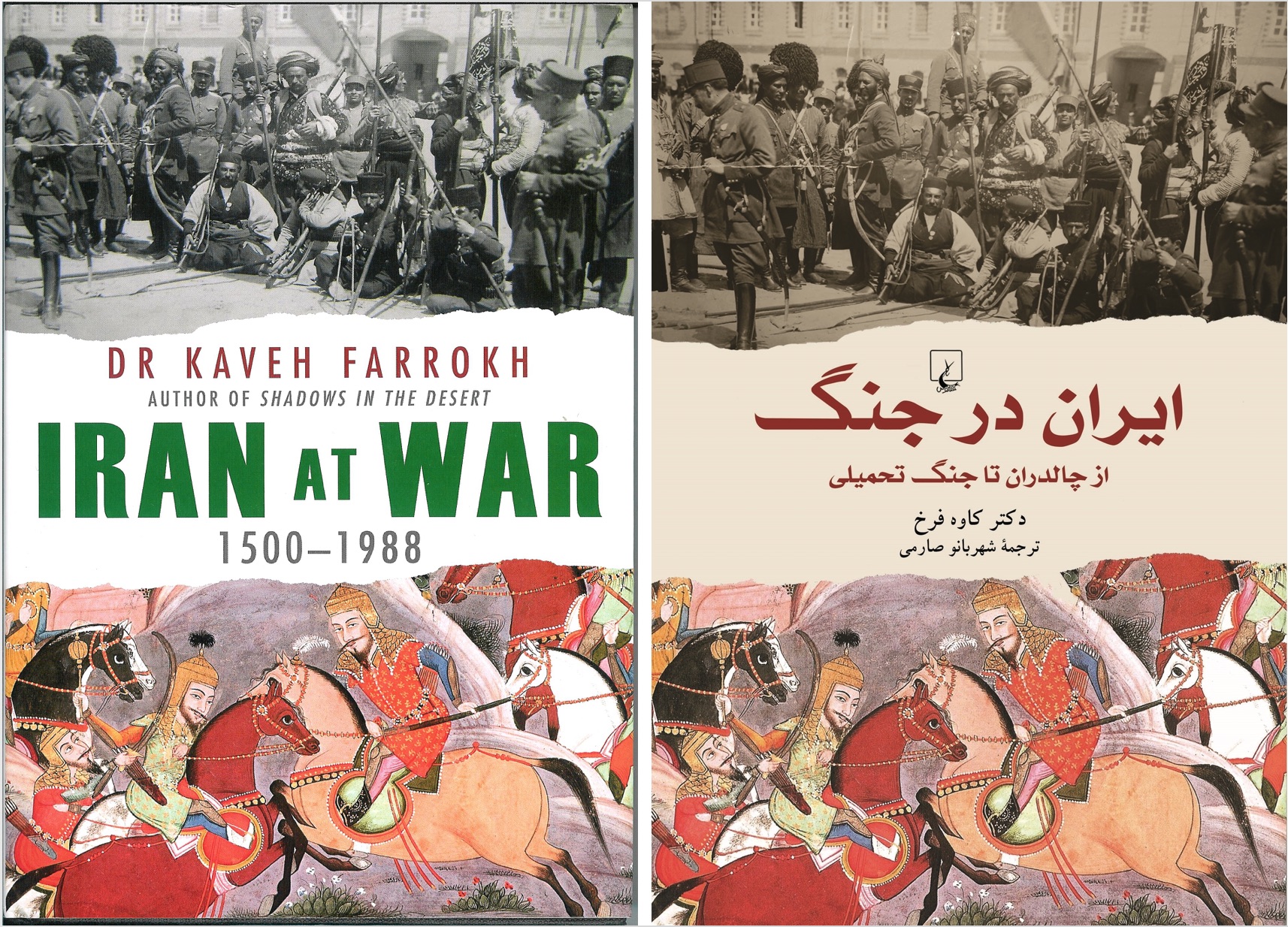
See reviews of above text:
- Aboul-Enein, Y. (2012). Book Review of Iran at War 1500-1988. Small wars Journal, July 12
- Terpstra, R. (Sept 11, 2011). Iran at War, Business Daily Report of Egypt
======================================================================================
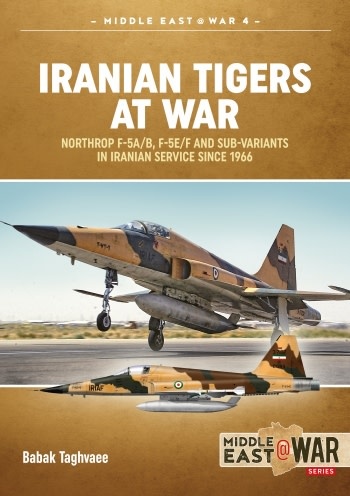
- Title: Iranian Tigers at War: Northrop F-5A/B, F-5E/F and Sub-Variants in Iranian Service since 1966 (available at Amazon)
- Author: Babak Taghvaee
- Publisher : Helion and Company (July 19, 2015)
- Language : English
- Paperback : 72 pages
- ISBN-10 : 1910294136
- ISBN-13 : 978-1910294130
The development of the F-5 lightweight supersonic fighter in the mid-1950s was almost a gamble for the Northrop Corporation, but ultimately resulted in one of most commercially successful combat aircraft in modern history. Iran was one of its major export customers, yet the long and often violent history of deployment of the F-5 in that country has largely escaped attention of historians. No less than 309 aircraft of five major variants of the jet – the F-5A, F-5B, RF-5A, F-5E and F-5F – have provided the backbone of the frontline strength of the Iranian Air Force since the mid-1960s. Additional examples were clandestinely purchased from Ethiopia and Vietnam in the 1980s.
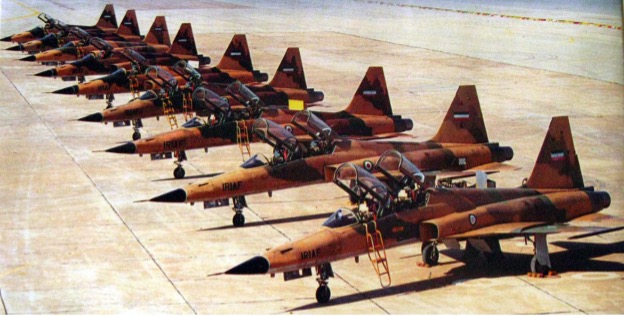
Photo of a row of Iranian F-5s at an unknown Iranian airbase in 1980 (at the start of the Iran-Iraq war when Iraq invaded Iranian territory in September 22, 1980) (Source: Military.net in Public Domain). Interestingly at the height of the Iranian revolution in 1978-1979, the Iranian high command had been aware that Iraq’s Saddam Hussein would be keen to take advantage of the chaos in Iran at the time to launch an invasion. This led to the dispatch of a squadron of F-5s from Tarbiz airbase in northwest Iran to reinforce the air force base at Dezful in Khuzestan (Farrokh, 2011, p.344). This deployment was one of the factors which prevented Iraq from seizing the entirety of Iran’s southwest province of Khuzestan in 1980.
The F-5 bore the brunt of Iran’s combat operations during the long war with Iraq, 1980-1988, and remains a mainstay of Iran’s Air Force as of today. This breathtaking account provides a detailed chronological history of the F-5 in combat service in Iran, a history dominated by long-range strikes against some of best defended targets inside Iraq, and by thousands of dramatic close-air-support and reconnaissance sorties.
A video recreation by DCS-World depicting the launch of Operation Morvarid on November 28, 1980 against two Iraqi oil rigs that were being used by the Iraqi military for operations against Iran in the northern Persian Gulf (Source: DCS-World in Youtube) – see also Part II of Operation Morvarid here … Another example of note is one of aviation history’s most dramatic combat missions, in which two Iranian F-5s launched a surprise bombing attack against the Iraqi 5th Mechanized division on March 4, 1986, virtually wiping out the commanding Iraqi general and his entire command personnel (Farrokh, 2011, p.388).
Iranian F-5s also flew fierce air combats against the then most modern fighter types in Iraqi service, including the MiG-23s and MiG-25s.
Video recreation by DCS-World of a highly advanced Iraqi Air Force Mig-25 Foxbox that was successfully intercepted and hit by an Iranian F-5 piloted by Yadollah Javadpour on August 6, 1983 (Source: DCS-World in Youtube), despite the F-5s several technical shortcomings against the highly advanced Mig-25. As noted by Farrokh & Sánchez-Gracia, large numbers of Iraqi jets were often being flown by foreign mercenary nationals from countries such as Belgium, East Germany (and possibly West Germany), South Africa and Pakistan (possibly also Indian personnel) (p.75 in Farrokh, K., & Sánchez-Gracia, J. (2022). La guerra Iran-Iraq [The Iran-Iraq War]. Historia de la Guerra, 29, pp.63-77.). For more on this topic see “Western, Pakistani and Egyptian pilots Flying Iraqi Combat Aircraft during the Iran-Iraq War” …
It is completed with practically unknown stories of their combat presence in Pakistan, Afghanistan and the war against drug traffickers in recent years. Good though the F-5 has been, the advances of domestic Iranian aircraft building companies have resulted in attempts to continue the F-5 line with further redesign and developments, resulting in a number of indigenous variants.
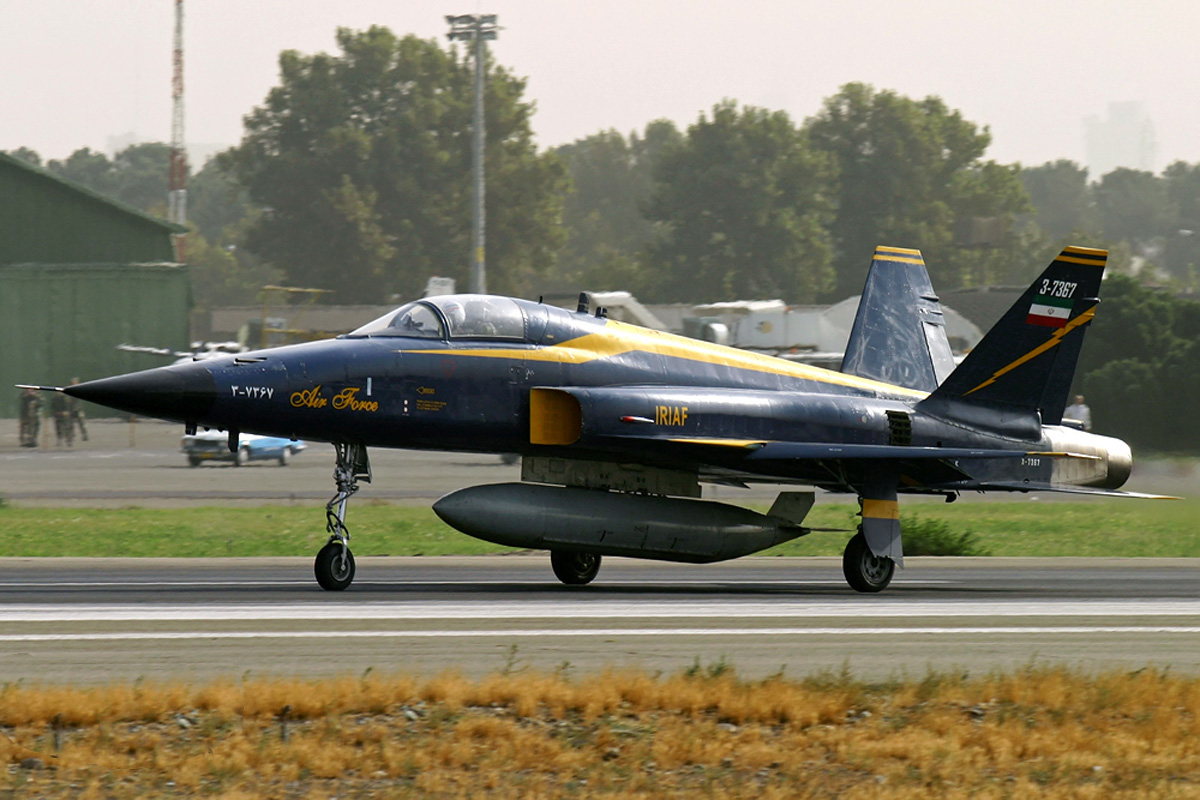
Photograph taken by Shahram Sharifi on September 16, 2009 of a HESA Saegeh (Thunderbolt) jet fighter produced in Iran (Source: Shahram Sharifi in Public Domain). The design of the HESA Saegeh has been based on the Northrop F-5 platform.
Combined, this means that the diverse and involved story about one of most interesting military aircraft of modern times is still far from over. The author’s detailed text is fully supported by an extensive selection of photographs and colour profiles, concise, incisive text, rare images and high quality color artwork providing fresh accounts of the critical role of the F-5 during the Iran-Iraq war.

